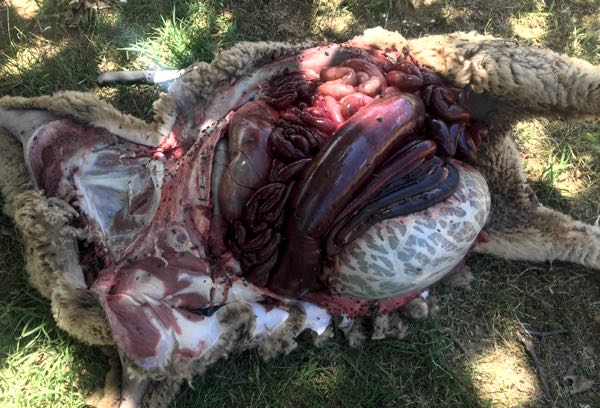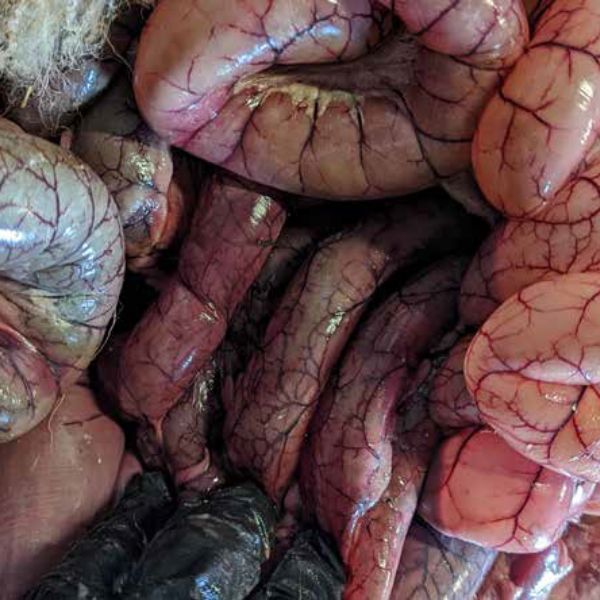Red Gut in Sheep
Red gut or intestinal torsion is a severe intestinal accident seen in sheep grazing lush green pasture. The disease is characterised by acute abdominal pain, collapse, and sudden death. Lambs are typically found dead and the carcass bloated.
What causes Red Gut in sheep?
Healthy ruminant digestion relies on rumen and the microbial population within it to ferment and break down feed sufficiently. In the case of red gut, if sheep eat a lot of low-fibre feed that is lush and highly digestible, such as lucerne, clover, and some legumes, it can move out of the rumen/reticulum and into the intestines too quickly. This causes the feed to ferment in the colon instead of the rumen, causing gaseous distension of the intestines in excess of normal.
Excessive intestinal gas and small rumen creates space for organs to move in the abdomen causing twisting of the intestines. This twisting can completely cut blood supply, and further increases gas buildup. Once blood supply is reduced or removed, a series of events quickly follow one another that result in tissue death, rapid decomposition, and painful death of the animal.

Post-mortem showing marked reddening and distension of the small and large intestines.
Image credit: Kate Peffer - Flock & Herd.
Clinical signs of Red Gut in sheep
It takes about 1 week for the organs to change in size, therefore losses from red gut are not seen for about a week after sheep are introduced to the paddock.
Affected animals show a brief period of abdominal distension and discomfort followed by death from circulatory and endotoxic shock
Externally, post-mortem sheep will show marked abdominal bloating, with dark red/purple gums and purple skin in the inguinal (groin) region.
Internally, red gut causes bowel twisting or displacement. There may be marked gaseous distension of the gastrointestinal tract, with bloody-appearing fluid within the abdominal cavity. The large and small intestines may appear dark red to purple/black, or have dark red vasculature
Symptoms are similar to pulpy kidney (bloated, rapid decomposition).

How to prevent Red Gut in sheep?
Once an intestinal torsion has occurred there is no effective treatment, so prevention is key.
Reduce the risk of Red Gut by providing low protein roughage, vaccinating with A,D and E or alternate grazing.
- Ensure hungry animals are never turned directly onto lush feed – pre-feed with palatable hay or a feeder of oats before moving, as you otherwise risk them going straight for the green feed and ignoring any hay.
- Once on lush pasture, ensure access to ad-lib hay at all times.
- If hay is not available, intermittently graze between fibrous paddocks and lush paddocks. Grazing for five days then removing for two days and grazing for another five days and so on until the Lucerne hardens up is probably best way to prevent losses.
Grazing roughage decreases the incident of red gut by slowing the passage of digesta though the gastrointestinal tract, reducing hypermotility of the small intestines and gas distension of the large intestines. Roughage also increases the size of the reticulorumen which helps stabilise the intestines and prevent their displacement.
Adapted from content by district vets Kate Peffer, Bianca Garnham, Brent McLeod, and Geoff Duddy.